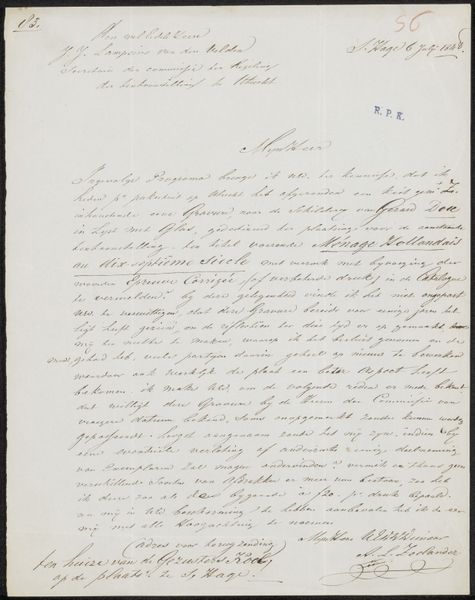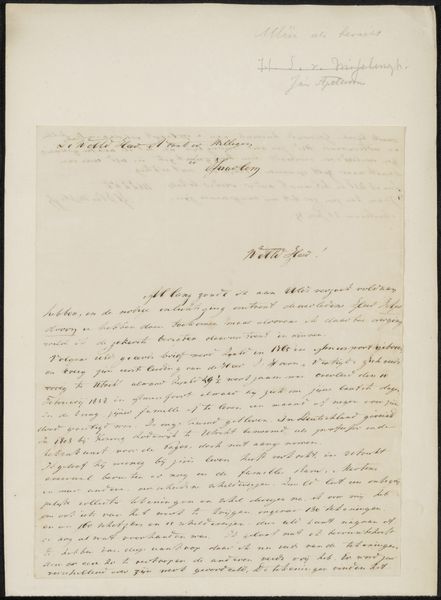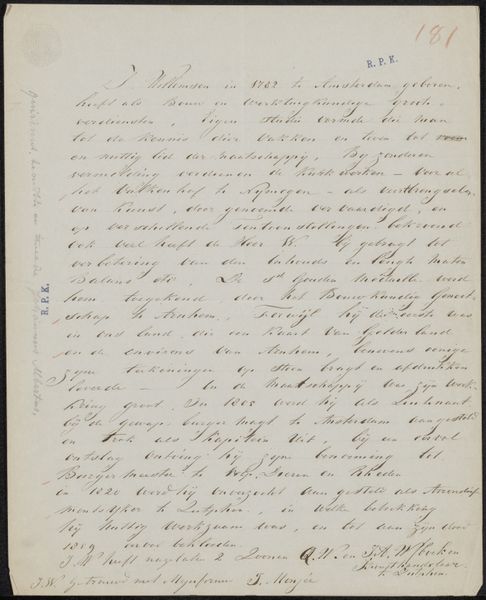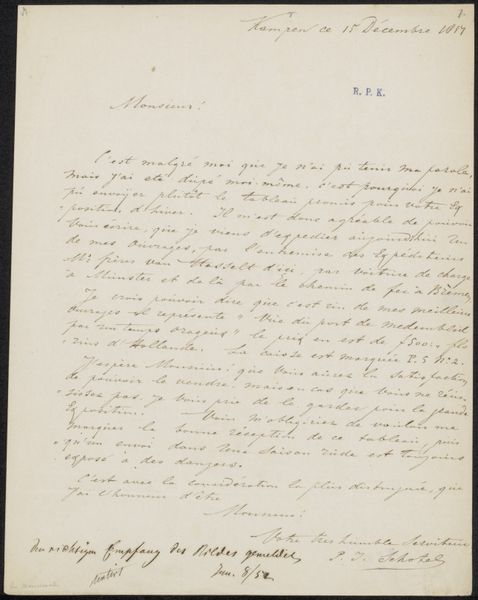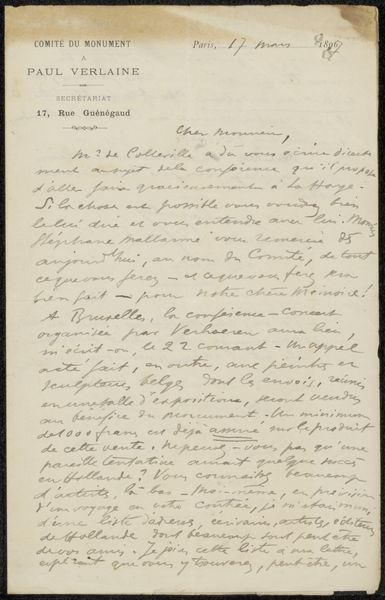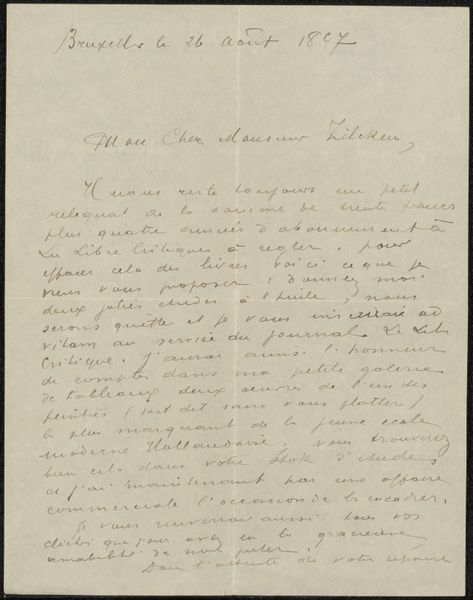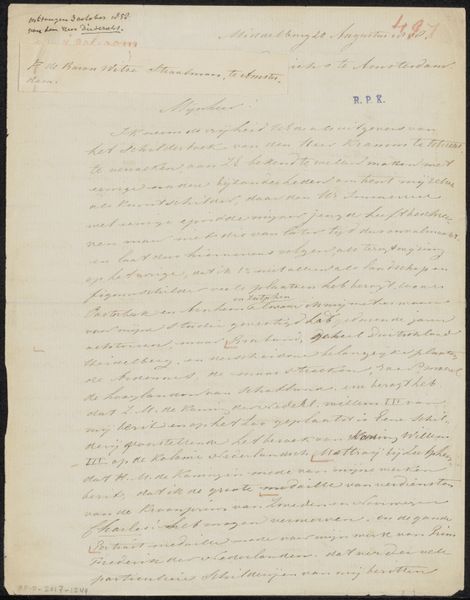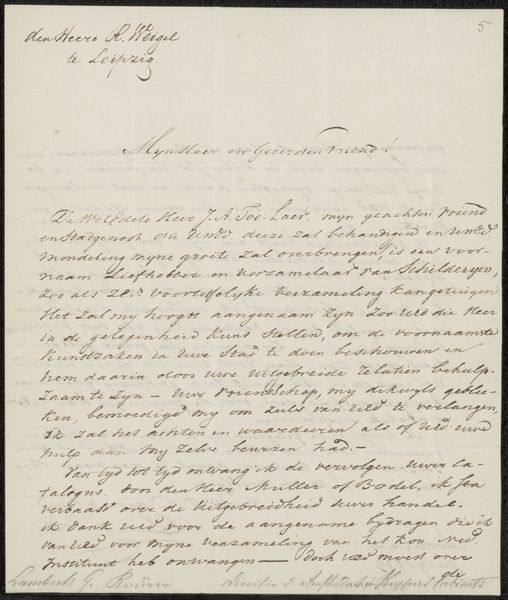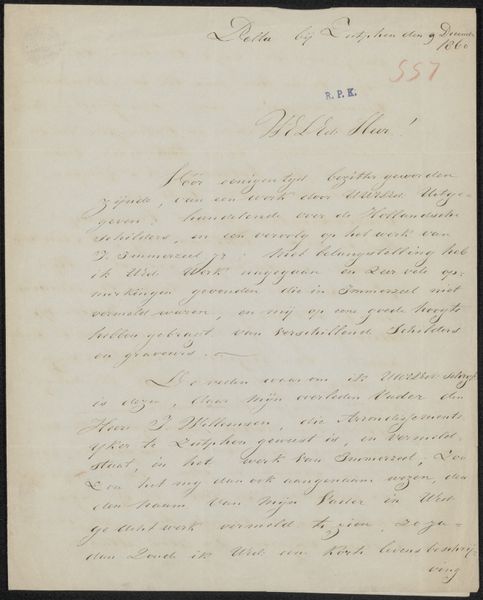
Brief aan Alexander Pierre Philip Cornelis Robert de Ceva 1833
0:00
0:00
barendcorneliskoekkoek
Rijksmuseum
drawing, paper, ink
#
drawing
#
paper
#
ink
#
romanticism
#
genre-painting
Copyright: Rijks Museum: Open Domain
Editor: This is a letter, titled "Brief aan Alexander Pierre Philip Cornelis Robert de Ceva," from 1833 by Barend Cornelis Koekkoek. It's created with ink on paper, and what strikes me is its delicate, personal nature, and it falls under Romanticism with a touch of genre-painting. How would you interpret such a private piece being put on display? Curator: Precisely. Letters like this offer invaluable glimpses into the artist's social world, and here, his working methods. By putting it on display, we invite the public to consider the relationships between artistic creation and personal connections within the specific societal conventions of the 19th century. What does this letter reveal about artistic networks, power, and how they play a crucial role in determining whose voices get amplified and why? Editor: That’s fascinating. So you’re saying even something as seemingly personal as this letter is actually intertwined with broader social structures and the power dynamics inherent within the art world at that time? Curator: Exactly. And consider the impact of colonialism on artistic materials and aesthetics. The type of ink, the very paper itself – where did these originate? How did trade and empire influence artistic practice, and whose stories are often left untold in these accounts? Editor: It makes you rethink the way art history is taught. It’s not just about technique and style, but also about the socio-political conditions that shaped its creation. Curator: Indeed. Engaging with historical art means confronting the complex, and sometimes troubling, legacies embedded within it. We have to encourage discussion to expose that to a contemporary audience, which in return invites us to do better in today's environment.
Comments
No comments
Be the first to comment and join the conversation on the ultimate creative platform.
